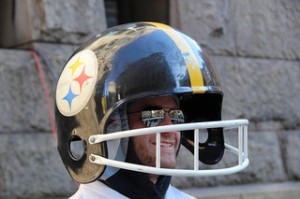 It’s easy to see the importance of a helmet while riding a bicycle. We wear them ourselves and teach our children to wear them at all times. However, too often we forget to emphasize the crucial nature of a proper fit. If a helmet fits improperly, it will not provide the maximum protection you’re looking for. There are some easy steps to make sure you are buying the right helmet and fitting it for your head.
It’s easy to see the importance of a helmet while riding a bicycle. We wear them ourselves and teach our children to wear them at all times. However, too often we forget to emphasize the crucial nature of a proper fit. If a helmet fits improperly, it will not provide the maximum protection you’re looking for. There are some easy steps to make sure you are buying the right helmet and fitting it for your head.
1. Approved Helmet
If it says “bicycle helmet” on the label, it must meet the standards set by law in the United States. Look for the CPSC sticker, and a low price helmet meets the same standards as a high end version.
2. Proper size
The first step is to measure your head to find the approximate size of the helmet you need. Be sure to try on a helmet before you buy it. It should fit snugly, and not rock side to side. Helmets are somewhat adjustable with straps and sizing pads, so mix and match these for comfort and fit. If it is for a child, you can remove these pads as his head grows.
3. Position
- Place the helmet level on your head, with about two finger widths between the front of the helmet and your eyebrows.
- Center the buckles under your chin by adjusting the straps to lengthen or shorten them.
- The straps should form a V that meets just under your ears, and when buckled it should be snug enough to only get a couple of fingers under the strap.
- If you can push the helmet in any direction more than an inch, you probably need to adjust and tighten it.
4. Replace it!
Almost all helmets today are made of expanded polystyrene foam which absorbs the contact and gets crushed in place of your head. Helmets are intended to be single use. If you have been in an accident, your helmet is probably not serving the purpose it’s intended for.
